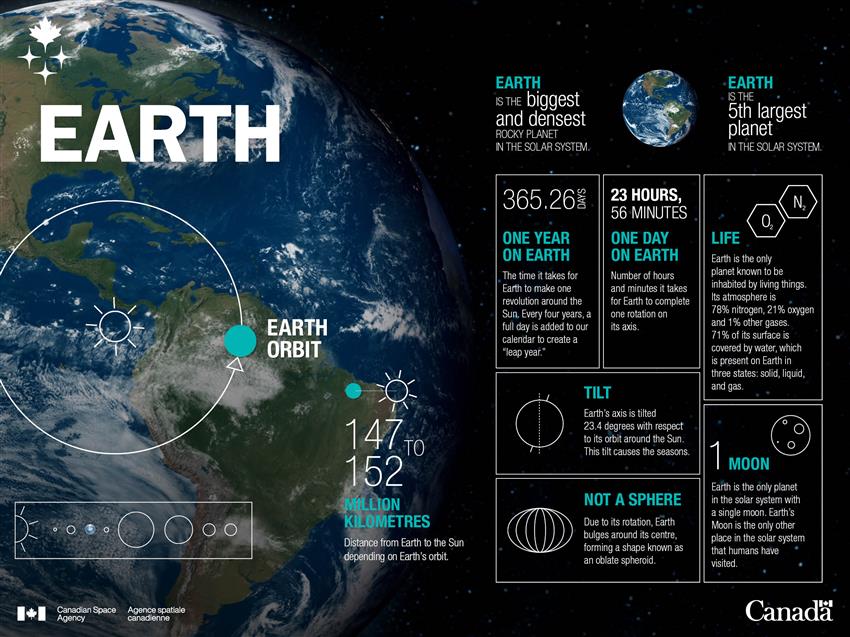Earth
About Earth
| Type | Rocky planet |
|---|---|
| Size (diameter) | 12,742 km |
| Mass | 5.97 × 1024 kg |
| Length of a year (orbital period) | 365.26 days |
| Number of moons | One: the Moon |
| Average distance from the Sun | 150 million km |
| Temperature | Between -89.2 to 56.7 degrees Celsius |

Our home, Earth, as seen from space. (Credit: NASA)
Formation
Scientists believe it took between 10 and 20 million years for Earth to form. The solar system began as a large cloud of gas, dust, and ice that collapsed into a spinning disc. Our Sun was born at its centre, and the planets were created about 4.5 billion years ago from particles sticking together along rings in the disc.
Orbit and rotation
Earth completes one orbit around the Sun in 365.26 days. Since this is a little longer than a regular calendar year of 365 days, one extra day is added every four years; a year with 366 days is called a leap year.
Earth also spins on its axis and completes one rotation per 24 hours. This rotation causes night and day.
Seasons

Earth's tilt causes the seasons as the planet orbits the Sun. (Credit: NASA)
Earth's rotation and orbit are not perfectly perpendicular to each other – an angle of 23.5 degrees exists between the two. This tilt in Earth's rotation causes different parts of the planet's surface to receive varying intensities of sunlight throughout the year, causing the seasons.
When the northern hemisphere is tilted towards the Sun, it is summer in the North and winter in the South. When the southern hemisphere is tilted towards the Sun, it is summer in the South and winter in the North.
Surface
Over two-thirds of Earth's surface is covered in water. The abundance of this important substance plays a crucial role in making Earth the only place in the entire universe that we know with absolute certainty harbours life.
Like all other planets in the solar system, Earth has been subjected to thousands of asteroid impacts throughout its long history. However, the record of these impacts is not easy to find because Earth's surface is constantly changing: our planet's water systems, active plate tectonics, and atmosphere have eroded away key clues about these prehistoric collisions. Despite these forces, some traces are still visible across Canada, like the Manicouagan Crater in this photo taken by astronauts aboard the International Space Station.
Observation
The Canadian Space Agency (CSA), NASA and other space agencies around the world observe and study Earth from space. Satellites that orbit our planet, such as Canada's RADARSAT Constellation, have a privileged point of view that enables scientists to study ocean currents, climate change, weather patterns, and more.

Text version - Earth in numbers – Infographic
Infographic featuring an image of Earth along with a series of facts. (Credit: CSA)
